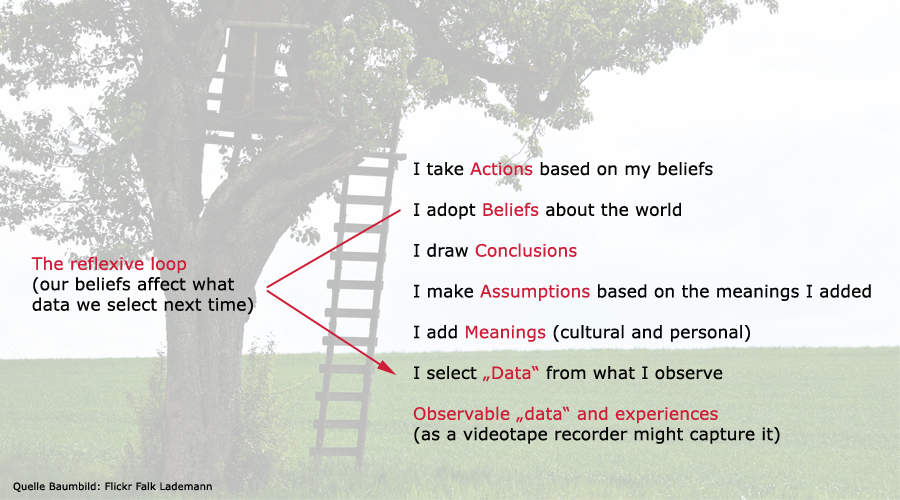Leaders,
As it’s time to prepare for the mid-term performance evaluations with your teams, I thought it might be worthwhile sharing as to what could enhance the effectiveness of your feedback discussions. I will talk about formal and informal feedback in this blog post. Giving feedback can be one of the hardest leadership tasks. To be perfectly honest, I haven’t found one that is harder during my managerial career. Anxiety easily comes into play: You don’t want to injure the relationship, you might fear an emotional reaction of your team member or you might be afraid that the data that you used for the evaluation will be questioned; and you might be cautious because of the potential impact of your feedback. This spring, I designed and facilitated a leadership development workshop for a client, an international Switzerland-based company in the financial services industry. Around 50 line managers participated; they had different cultural backgrounds and came from different levels in the organization. All of them were highly specialized in their fields and very analytical. The topic of their offsite meeting was ‘why feedback matters’, the overall goal of which was to increase the awareness of feedback in the communication with their teams. Before the line managers discussed some real case studies, I walked them through a few models, frameworks and data for them to be able to dive into the value of feedback:
- We spoke about blind spots, areas of yourself that others know about, but you yourself are not aware of (model: Johari Window). The Gap Map (as outlined in Douglas Stone’s and Sheila Heen’s new book “Thanks for the feedback”) reveals the process steps from my own thoughts and feelings, my intentions and behavior to the impact of my actions on others and the perception or story others might hold about me; the steps of the Gap Map give you an idea as to where there could be a disconnect and what might amplify your blind spot.
- We discussed the conflict avoidance cycle and how you could potentially overcome it, which is basically by becoming more conscious about the positive outcomes of conflict and about your own “hot buttons”.
- I shared with them the results of studies on the impact of feedback and manager-led development on team performance. Believe it or not, the provision of fair and accurate informal feedback can increase performance by almost 40%!
- We talked about the root causes of performance challenges that can basically be structured around motivation, environment, knowledge and skill; and how to overcome them.
- The ‘ladder of inference’ – a model developed by Chris Argyris and published in “The fifth discipline workbook” – makes each stage of our thinking process, presented as a rung on the ladder, transparent. Starting at the bottom of the ladder, we have reality and facts. From there, we experience these selectively based on our beliefs and prior experiences; interpret what they mean; apply our existing assumptions, sometimes without considering them; draw conclusions based on the interpreted facts and our assumptions; develop beliefs based on these conclusions; take actions that seem “right” because they are based on what we believe. You can use the ‘ladder of inference’ in three ways: 1. Becoming more aware of your own thinking and reasoning (reflection) 2. Making your thinking and reasoning more visible to others (advocacy) 3. Inquiring into others’ thinking and reasoning (inquiry)
- The structure that we used for the feedback discussion is based on the ‘ladder of inference’ and the concept of non-violent communication. It is called ‘clean talk framework’. It entails four steps: 1. Observation: You describe what you notice (situation and behavior). 2. Feelings: You share the impact. 3. Interpretation: You let the other person know how you evaluate or assess the situation. 4. Request: You request clear actions that are objectively measurable.
When we debriefed the case studies and discussed the takeaways of the workshop, line managers came up with these five points to remember:
- Timely – Give feedback as soon as possible after the action or event
- Relevant – Make sure feedback helps the team member do their job better and it is within their power to improve
- Specific – Present feedback in a way that it references specific actions the team member took or specific pieces of their work
- Proactive – Provide feedback proactively, not just when staff request it
- Constructive – Share development feedback rather as an opportunity to improve performance than a “weakness”.
In addition, courage, time and prioritization are required for appreciative and supportive feedback to take an effect.
You can find feedback everywhere. Every response or resonance to an action is (informal) feedback. It is neither good nor bad; it is just a response to a behavior or action. By considering some of the frameworks mentioned above, you will be able to deliver feedback in a way that is highly effective and helpful.
Changes in processes or priorities call for re-alignment of resources; feedback does play an important role during transitory periods. Read more on change management in our eBook ‘Energetic? Change! Exceptional Leaders Use Leadership Energy! Please download it here.
Coaching with Inspired Executives helps you establish and hone effective feedback habits. They are key in your communication with your teams. Just contact us if you want to know more.
Greetings from Frankfurt, Annette and the Inspired Executives Team
P.S.: Your feedback is always welcome. We consider it to be a gift that we genuinely appreciate. Please leave a comment or thought below. Thank you.

